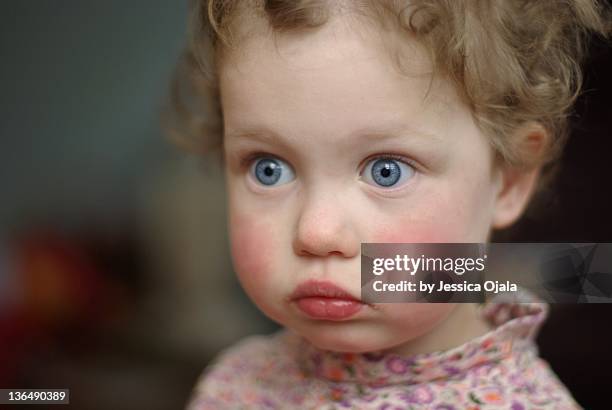Rosy Cheeks: From a Healthy Glow to a Health Concern

Key points
- Emotional Responses: Strong emotions like excitement, embarrassment, anxiety, or stress can trigger the sympathetic nervous system, causing a blush.
- Physical Exertion and Environment: Exercise increases blood flow to cool the body down, resulting in a healthy flush. Similarly, exposure to cold weather causes the body to push warm blood to the skin's surface, while hot weather or a hot shower widens vessels to release heat.
- Food and Drink: Consuming spicy foods, hot beverages, or alcohol can cause temporary flushing. Some people experience an "alcohol flush reaction" due to an inherited enzyme deficiency that makes it difficult to metabolize alcohol, as noted by Healthline.
The Allure and Alarm of Rosy Cheeks: More Than Just a Blush
Rosy cheeks have a captivating duality. For centuries, they've been celebrated as a sign of robust health and vitality. In Charlotte Brontë’s novel Jane Eyre, the protagonist laments not having "rosy cheeks," a coveted trait of beauty. Fast forward to today, and a delicate flush is a staple on the red carpet, a sign of youthfulness and radiance. Yet, for many, that same redness can be a source of discomfort and concern—a "problematic flush" that signals anything from social anxiety to a chronic medical condition.
This article delves into the multifaceted world of rosy cheeks, synthesizing information from leading health experts to help you differentiate a harmless blush from a health warning, explore management options, and understand the cultural perceptions behind this common phenomenon.
What Causes Rosy Cheeks? Differentiating Harmless Flushing from Health Concerns
Understanding the cause of your rosy cheeks is the first step toward managing them. The redness is caused by blood vessels near the skin's surface widening, allowing more blood to flow through. The key is to determine what's triggering this reaction.
Benign and Temporary Causes of a Healthy Flush
In most cases, rosy cheeks are a temporary and harmless physiological response. This benign flushing typically resolves on its own once the trigger is removed.
- Emotional Responses: Strong emotions like excitement, embarrassment, anxiety, or stress can trigger the sympathetic nervous system, causing a blush.
- Physical Exertion and Environment: Exercise increases blood flow to cool the body down, resulting in a healthy flush. Similarly, exposure to cold weather causes the body to push warm blood to the skin's surface, while hot weather or a hot shower widens vessels to release heat.
- Food and Drink: Consuming spicy foods, hot beverages, or alcohol can cause temporary flushing. Some people experience an "alcohol flush reaction" due to an inherited enzyme deficiency that makes it difficult to metabolize alcohol, as noted by Healthline.
 Source: Getty Images
Source: Getty Images
When Rosy Cheeks Signal an Underlying Medical Condition
If your facial redness is persistent, recurrent, or accompanied by other symptoms, it may be a sign of an underlying medical issue. It's crucial to pay attention to these patterns to seek timely care.
Rosacea: The Most Common Culprit
Rosacea is a chronic and progressive inflammatory skin condition that affects millions worldwide. It often begins as a tendency to flush easily but can evolve to include:
- Persistent facial redness, especially on the cheeks, nose, and forehead.
- Small, red, pus-filled bumps that resemble acne.
- Visible broken blood vessels (telangiectasia).
- A burning or stinging sensation.
- In some cases, thickening of the skin, particularly on the nose (rhinophyma).
Diagnosing rosacea in skin of color can be challenging, as the redness may present as a dusky brown or violet hue, and there is a higher risk of post-inflammatory hyperpigmentation.
Other Skin Conditions
- Acne: Widespread inflammatory acne can cause significant redness and irritation across the cheeks.
- Contact Dermatitis & Eczema: Allergic reactions to skincare products or environmental irritants can cause red, itchy, and swollen skin. Atopic dermatitis (eczema) can also cause chronic red patches on the face.
- Sunburn: Overexposure to UV rays is a common cause of red, inflamed skin.
Systemic and Internal Health Issues
Sometimes, rosy cheeks are an external sign of an internal issue.
- Hormonal Changes: Hot flashes during menopause are a well-known cause of sudden, intense facial flushing.
- Infections: Certain illnesses are known for causing a characteristic facial rash. Fifth disease, a common viral infection in children, is nicknamed "slapped cheek syndrome" for the bright red rash it causes on the cheeks. Bacterial infections like scarlet fever can also lead to flushed cheeks.
- Autoimmune Conditions: Lupus can cause a distinctive butterfly-shaped (malar) rash across the cheeks and bridge of the nose.
- Medication Side Effects: A wide range of medications, from blood pressure drugs to high doses of niacin (Vitamin B3), can list flushing as a side effect.
- Rare Conditions: In rare instances, persistent flushing can be a sign of more serious conditions like Cushing's syndrome or carcinoid tumors, which are typically accompanied by other significant symptoms.
 Source: UNC Health Talk
Source: UNC Health Talk
Managing and Treating Red Cheeks: A Tailored Approach
The right management strategy depends entirely on the underlying cause of your rosy cheeks. A personalized approach, often guided by a dermatologist, yields the best results.
At-Home Care and Lifestyle Adjustments
For many, managing redness begins with simple lifestyle changes.
- Gentle Skincare: Use a mild, non-abrasive cleanser and lukewarm water. Avoid harsh exfoliants, toners, and astringents.
- Sun Protection: Sun exposure is a major trigger for conditions like rosacea. Daily use of a broad-spectrum sunscreen with an SPF of 30 or higher is non-negotiable.
- Identify and Avoid Triggers: Keep a diary to track flare-ups. Common triggers include spicy foods, alcohol, extreme temperatures, and stress. Avoiding them can significantly reduce flushing episodes.
Medical Treatments for Persistent Redness
If at-home care isn't enough, a doctor may recommend medical treatments.
- Topical Medications: Creams and gels like brimonidine (Mirvaso) and oxymetazoline (Rhofade) work by constricting blood vessels to reduce redness. Anti-inflammatory topicals like metronidazole and azelaic acid can help with the bumps associated with rosacea.
- Oral Medications: Oral antibiotics, such as doxycycline, are often prescribed in low doses for their anti-inflammatory effects.
- Laser and Light Therapy: Treatments like Intense Pulsed Light (IPL) can effectively reduce persistent redness and visible blood vessels. These procedures should be performed by an experienced professional, especially on skin of color, to minimize risks of hyperpigmentation.
Special Considerations for Diverse Demographics
- Treating Rosy Cheeks in Skin of Color: As mentioned, diagnosis can be difficult. It is crucial to use gentle products and approach treatments like laser therapy with caution to prevent scarring or changes in pigmentation.
- Addressing Red Cheeks in Babies and Children: Red cheeks in young children are often caused by teething, infections like Fifth Disease, or skin sensitivity. Management focuses on gentle moisturizers, lukewarm baths, and treating the underlying illness when necessary. Always consult a pediatrician if you are concerned.
The Cultural View: A Healthy Glow or a Problematic Flush?
The perception of rosy cheeks is deeply rooted in our culture and psychology, creating a stark contrast between a desired "glow" and a stigmatized "flush."
The Symbol of Health and Attractiveness
As highlighted by research summarized in Psychology Today, a rosy complexion is often perceived as a sign of good circulation, oxygenation, and overall health. This evolutionary cue links redness with vitality and fertility, making it an attractive feature. The beauty industry capitalizes on this, with blush being a cosmetic staple used to mimic this natural, healthy flush.
The Stigma and Social Anxiety of Blushing
On the flip side, an involuntary and uncontrollable flush—blushing—can be a source of intense social anxiety. It makes a private emotion public, often leading to a vicious cycle where the fear of blushing itself becomes a trigger. This "problematic flush" is not seen as a sign of vitality but as a marker of discomfort, shame, or a lack of composure, causing significant psychological distress for many.
Conclusion: Understanding Your Unique Glow
Rosy cheeks are a complex and personal experience. For some, they are a fleeting blush, a sign of a brisk walk or a moment of joy. For others, they are a chronic condition requiring careful management. The key is to pay attention to your body. By understanding the context—whether the redness is temporary or persistent, isolated or accompanied by other symptoms—you can determine whether it's a simple glow to be embraced or a signal to consult a healthcare professional.
References:

About the author
Elena Vance, MD, is a double board-certified dermatologist and pediatric dermatologist. She is an assistant professor of dermatology at a leading medical university in California and is renowned for her research in autoimmune skin disorders.